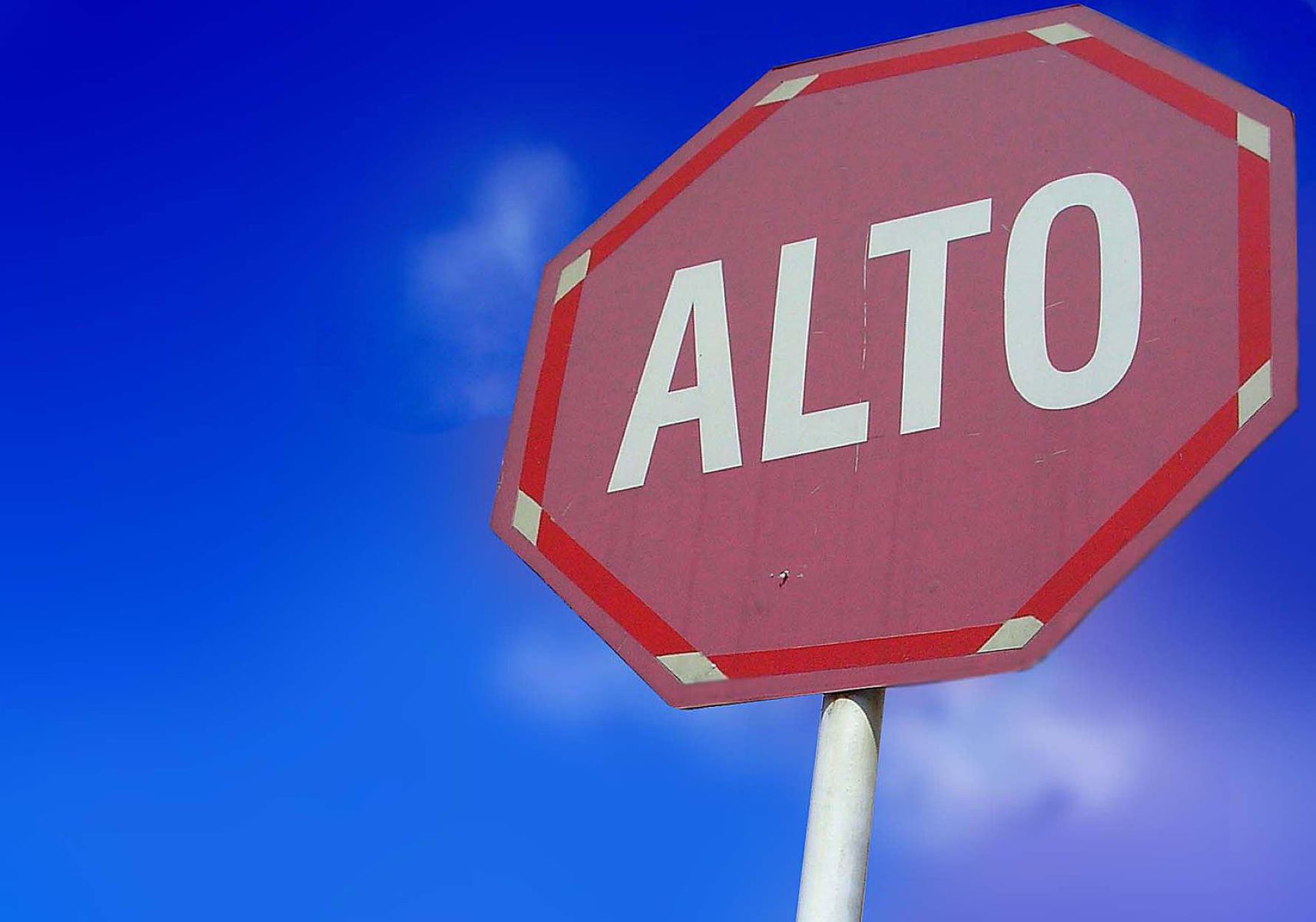Home>Language and Grammar>How To Say “I Don’t Know” In Spanish


Language and Grammar
How To Say “I Don’t Know” In Spanish
Published: February 28, 2024
Learn how to say "I don't know" in Spanish and improve your language and grammar skills with our helpful guide. Master the art of expressing uncertainty in Spanish!
(Many of the links in this article redirect to a specific reviewed product. Your purchase of these products through affiliate links helps to generate commission for Regretless.com, at no extra cost. Learn more)
Table of Contents
Introduction
Learning a new language opens doors to a world of possibilities, allowing individuals to connect with diverse cultures and communities. Spanish, in particular, is a widely spoken language with a rich history and vibrant linguistic nuances. One of the fundamental aspects of mastering any language is understanding how to express uncertainty or lack of knowledge in various situations. In Spanish, the phrase "I don't know" is essential for effective communication and can be expressed in several ways, each suited to different contexts and levels of formality.
In this article, we will delve into the intricacies of conveying uncertainty in Spanish, focusing on the phrase "I don't know" and its variations. By exploring the common phrases used to express this concept, understanding the contextual usage of "No sé," and discovering alternative ways to convey uncertainty, readers will gain valuable insights into navigating conversations in Spanish-speaking environments.
Whether you are a beginner eager to expand your language skills or an enthusiast seeking to refine your understanding of Spanish expressions, this exploration of "I don't know" in Spanish will provide you with the knowledge and confidence to engage in meaningful conversations and connect with native speakers on a deeper level. Let's embark on this linguistic journey and unravel the diverse ways in which uncertainty is articulated in the beautiful language of Spanish.
Read more: How To Say “Please” In Spanish
Common Phrases for "I Don't Know" in Spanish
In Spanish, expressing uncertainty or lack of knowledge can be conveyed through various phrases, each offering a distinct nuance and level of formality. Understanding these common expressions is crucial for effective communication in diverse settings. Let's explore some of the prevalent phrases used to convey "I don't know" in Spanish:
1. "No sé"
The most straightforward and widely used phrase for "I don't know" in Spanish is "No sé." This simple yet versatile expression is suitable for both formal and informal contexts, making it an essential component of everyday conversations. Whether seeking information or responding to a query, "No sé" serves as a concise and universally understood way to convey uncertainty.
2. "No tengo ni idea"
For a more emphatic expression of not knowing, one can use the phrase "No tengo ni idea," which translates to "I have no idea." This phrase conveys a stronger sense of uncertainty and is often employed in casual or colloquial conversations. Its directness and emphasis on the lack of knowledge make it a compelling choice for expressing genuine bewilderment or confusion.
3. "No estoy seguro/a"
When expressing uncertainty in a more nuanced manner, individuals can use the phrase "No estoy seguro" for masculine form or "No estoy segura" for feminine form, which translates to "I am not sure." This phrase allows for a slightly more tentative expression of uncertainty, indicating a degree of hesitation or doubt while maintaining politeness and respect in formal interactions.
Read more: How To Say “Christmas” In Spanish
4. "Quizás" or "Tal vez"
In certain contexts, conveying uncertainty may involve the use of the words "Quizás" or "Tal vez," both of which mean "perhaps" or "maybe." While not direct equivalents of "I don't know," these expressions are employed to introduce a sense of possibility or speculation, subtly indicating a lack of definitive knowledge or certainty.
5. "Es posible"
Another way to convey uncertainty in Spanish is through the phrase "Es posible," meaning "it is possible." This expression allows individuals to acknowledge the potential for a certain outcome or answer while simultaneously indicating a lack of absolute knowledge or conviction.
Mastering these common phrases for expressing uncertainty in Spanish equips language learners with the tools to navigate a wide range of conversations and interactions. Whether engaging in casual discussions, seeking information, or participating in formal exchanges, the ability to articulate "I don't know" in Spanish empowers individuals to communicate effectively and authentically in diverse linguistic contexts.
Using "No sé" in Different Contexts
The phrase "No sé" serves as a versatile and indispensable tool for expressing uncertainty in Spanish, finding relevance across a spectrum of contexts and interactions. Its simplicity and directness make it a go-to expression for acknowledging a lack of knowledge or certainty. Whether navigating everyday conversations, seeking information, or engaging in formal discourse, understanding the nuanced usage of "No sé" is essential for effective communication in Spanish.
In casual settings, "No sé" effortlessly conveys a genuine lack of knowledge or uncertainty. When friends or acquaintances pose questions about a wide range of topics, from personal preferences to general knowledge, responding with "No sé" reflects an honest admission of not having the answer. This candid acknowledgment fosters an atmosphere of authenticity and openness in casual exchanges, allowing individuals to connect on a relatable level.
In more formal or professional environments, the phrase "No sé" retains its utility while adapting to the context of respectful communication. When addressing colleagues, clients, or individuals in positions of authority, using "No sé" demonstrates humility and honesty. It signifies a willingness to seek information or clarification, contributing to a culture of transparency and continuous learning within professional settings.
Furthermore, "No sé" can serve as a diplomatic response in situations where providing a definitive answer may be challenging or inappropriate. When faced with complex or sensitive inquiries, utilizing "No sé" allows individuals to navigate conversations with tact and discretion. This approach acknowledges the complexity of certain topics while conveying a respectful stance of non-assertiveness.
In educational settings, such as language learning environments or academic discussions, "No sé" plays a pivotal role in fostering a collaborative and supportive atmosphere. Students and educators alike can employ this phrase to express uncertainty or seek clarification without fear of judgment. By embracing "No sé" as a natural part of the learning process, individuals can engage in constructive dialogue and mutual knowledge-sharing, enriching the educational experience.
In summary, the phrase "No sé" transcends the boundaries of formality and informality, adapting seamlessly to diverse contexts and social dynamics. Its versatility as a tool for expressing uncertainty underscores its significance in facilitating genuine communication and fostering mutual understanding. By mastering the contextual nuances of "No sé," individuals can navigate conversations with authenticity, humility, and respect, enriching their linguistic interactions in the Spanish-speaking world.
Other Ways to Express Uncertainty in Spanish
In addition to the commonly used phrases for expressing uncertainty in Spanish, there are several nuanced ways to convey a sense of not knowing or hesitancy in conversations. These alternative expressions offer a rich tapestry of linguistic tools, allowing individuals to navigate diverse social and cultural contexts with finesse and authenticity.
Read more: How To Say “Wassup” In Spanish
1. "Puede ser"
The phrase "Puede ser," meaning "it could be," is a subtle yet effective way to introduce uncertainty into a conversation. By acknowledging the potential for a certain outcome without committing to a definitive answer, individuals can convey a sense of openness and receptiveness to different possibilities. This expression is particularly valuable in situations where multiple interpretations or solutions are plausible, fostering an atmosphere of exploration and collaboration.
2. "No estoy completamente seguro/a"
For a more cautious expression of uncertainty, individuals can use the phrase "No estoy completamente seguro" for masculine form or "No estoy completamente segura" for feminine form, which translates to "I am not completely sure." This nuanced expression conveys a degree of reservation or hesitation, indicating a thoughtful approach to acknowledging uncertainty. By incorporating qualifiers such as "completely," individuals can communicate a nuanced level of uncertainty while maintaining a respectful and considerate tone in their interactions.
3. "Tal vez sí, tal vez no"
The phrase "Tal vez sí, tal vez no," meaning "maybe yes, maybe no," introduces a balanced perspective on uncertainty, acknowledging the potential for contrasting outcomes. This expression reflects a willingness to entertain different possibilities while embracing the complexity of a given situation. By embracing the duality of potential outcomes, individuals can engage in open-minded discussions and decision-making processes, fostering an inclusive and collaborative approach to uncertainty.
4. "Es probable"
When seeking to convey a sense of likelihood without absolute certainty, individuals can use the phrase "Es probable," meaning "it is probable." This expression allows for the acknowledgment of a strong possibility while leaving room for alternative interpretations or unforeseen developments. By employing "Es probable," individuals can strike a balance between acknowledging potential outcomes and embracing the dynamic nature of uncertainty in various contexts.
Read more: How To Say “My Name Is” In Spanish
5. "No tengo la menor idea"
For a more emphatic expression of not knowing, individuals can use the phrase "No tengo la menor idea," which translates to "I have no idea whatsoever." This emphatic expression conveys a profound sense of uncertainty, emphasizing the absence of any knowledge or insight on a given topic. Its candid and direct nature makes it a compelling choice for expressing genuine bewilderment or perplexity in informal or casual conversations.
By embracing these diverse ways to express uncertainty in Spanish, individuals can enrich their linguistic repertoire and engage in meaningful conversations with depth and authenticity. These nuanced expressions not only facilitate effective communication but also reflect a profound understanding of the complexities inherent in navigating uncertainty within the Spanish language and its diverse cultural contexts.
Conclusion
Mastering the art of expressing uncertainty and acknowledging a lack of knowledge in Spanish is a pivotal aspect of language proficiency. Through this exploration of the diverse ways to convey "I don't know" in Spanish, we have uncovered a rich tapestry of linguistic tools that empower individuals to engage in authentic and meaningful conversations across various contexts.
From the ubiquitous simplicity of "No sé" to the nuanced expressions such as "Puede ser" and "No estoy completamente seguro/a," the Spanish language offers a spectrum of options for navigating uncertainty with grace and respect. These phrases not only serve as linguistic tools but also reflect the cultural values of humility, openness, and collaborative dialogue that are deeply ingrained in Spanish-speaking communities.
By embracing these expressions, language learners and enthusiasts can cultivate a deep understanding of the dynamic nature of communication, where uncertainty is not a barrier but a gateway to exploration and mutual understanding. Whether engaging in casual conversations, professional interactions, or educational pursuits, the ability to articulate uncertainty in Spanish fosters an environment of authenticity and empathy, strengthening interpersonal connections and cultural appreciation.
Furthermore, the significance of these expressions extends beyond language proficiency, transcending into the realm of cultural competence and global citizenship. By mastering the art of expressing uncertainty in Spanish, individuals demonstrate a profound respect for diverse perspectives and a willingness to engage in open-minded dialogue, transcending linguistic barriers to connect with others on a deeper, more meaningful level.
In conclusion, the diverse ways to say "I don't know" in Spanish not only enrich language skills but also serve as a testament to the universal values of humility, empathy, and collaboration. As we continue to explore the beauty of the Spanish language and its cultural nuances, embracing uncertainty becomes a transformative journey of connection, understanding, and shared humanity. So, let us embark on this journey with open hearts and open minds, embracing the richness of linguistic diversity and the profound beauty of genuine communication in Spanish.












